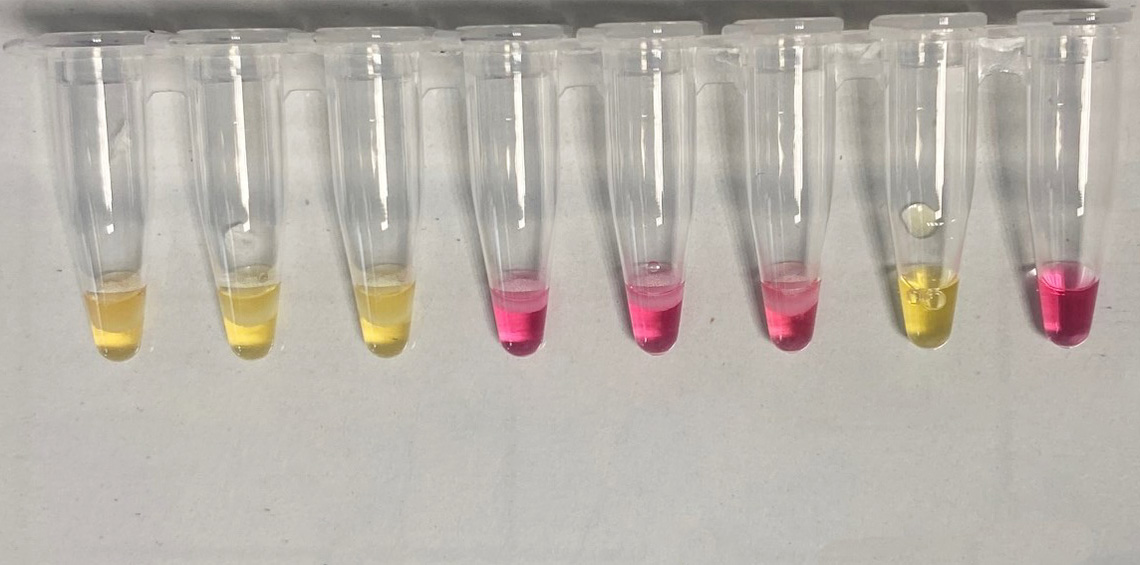
Assess, detect, protect: avenues to be explored to control garlic dry rot caused by fusarium
11 July 2022
The coming years will be intense in terms of research on garlic dry rot with three ongoing projects: GARLIC (CASDAR funding + PIClég labeling, 2022-2025, https://www.picleg.fr/Projets/Les-projets-en-cours/GARLIC); GOUSSE (SFR TERSYS, 2022-2023); BEYOND (ANR, 2021-2025 https://www6.inrae.fr/beyond/). These projects are coordinated by the Plant Pathology unit (INRAE Avignon) with the direct or indirect involvement of PROSEMAIL. They also integrate the research units SQPOV (INRAE, Avignon), Qualisud (University of Avignon), Agroecology (INRAE Dijon) and the 3A microscopy platform in Avignon. In the 3 projects, several axes are explored in order to advance the knowledge on garlic dry rot and to find solutions to protect garlic crops.
Assess the susceptibility of varieties
First of all, the development of protection methods for garlic requires an evaluation of the susceptibility to dry rot of garlic varieties grown in France. Indeed, to date, there is no classification of garlic varieties registered in the French official catalog according to their susceptibility to Fusarium proliferatum (Fp) and F. oxysporum (Fox). The knowledge of the behavior of varieties towards Fp and Fox could help farmers to orient their choices and to advance varietal selection. This will be a long process because, to date, disease resistance and tolerance criteria are not considered in the varietal registration procedure. The recently developed protocol for in vitro cloves inoculation and symptom scoring (Chrétien et al., 2021) is being optimized. The ultimate objective is to establish a classification of varieties according to their susceptibility to dry rot under controlled conditions.
Detect to better protect
One of the major difficulties in the study and understanding of garlic dry rot is that the symptoms only appear during storage. At present, we do not know what happens during cultivation. Moreover, it is known that Fp and Fox can be found in the tissues of symptomless cloves. Thus, one of the important objectives of the projects is the development of methods to detect these fungi in garlic cloves and in potential inoculum reservoirs (soil, irrigation water, rain, air…). Three methods are being explored: two by specific and sensitive amplification of Fp and Fox DNA (LAMP and digital PCR) and one by near and mid-infrared spectroscopy.
In the coming months, the detection of Fp and Fox in garlic cloves by the sense of smell of a trained dog will be tested. This method has been proven for various compounds and is currently being developed by INRAE of Montpellier on pests and plant pathogens.
Test alternative protection methods to chemical products.
These methods will have to eliminate Fp and Fox in the tissues of garlic cloves, and avoid the penetration of Fp and Fox in healthy cloves. They should also allow to maintain a good germination capacity of the cloves. Three methods will be tested: treatment with UV-C radiation, which reduces microbial contamination of plants and stimulates plant defense systems; thermotherapy, which reduces the development of fungi and maintains the quality of garlic bulbs; and the use of biocontrol agents in coatings, some of which are known to be effective in protecting against phytopathogenic fungi of the Fusarium genus.
The progress of the projects and the significant results will be communicated regularly, in particular at the PROSEMAIL general meeting.
Authors: Christel Leyronas & Hélène Hunyadi

Example of a detection result with the LAMP method with DNA of Fusarium proliferatum (yellow: positive; pink: negative). The objective of the development is to obtain such clear results for Fp in garlic tissue. (©INRAE)
